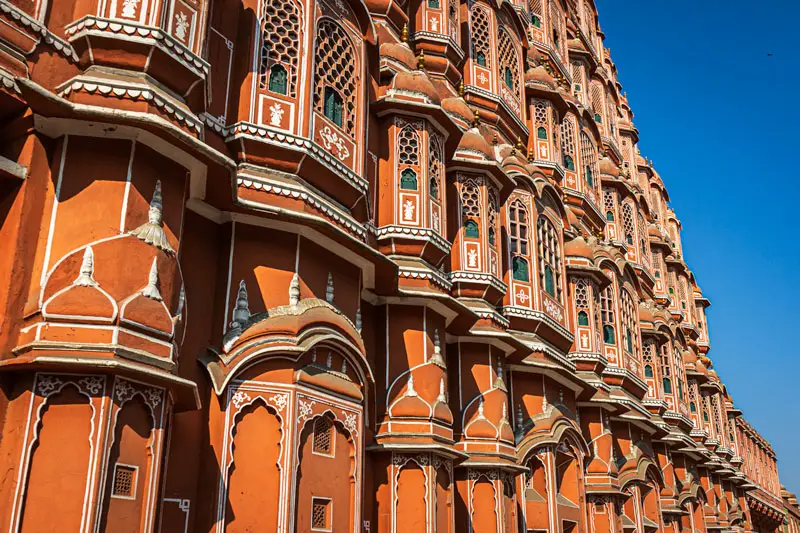Jaipur, the capital of Rajasthan, is a city that beautifully blends history, culture, and modernity. Known as the Pink City, it offers a wealth of experiences for every type of traveler. In this guide, we’ll explore the top places to visit, practical travel tips, and more to ensure you make the most of your visit to Jaipur.
Why Jaipur is a Must-Visit Destination
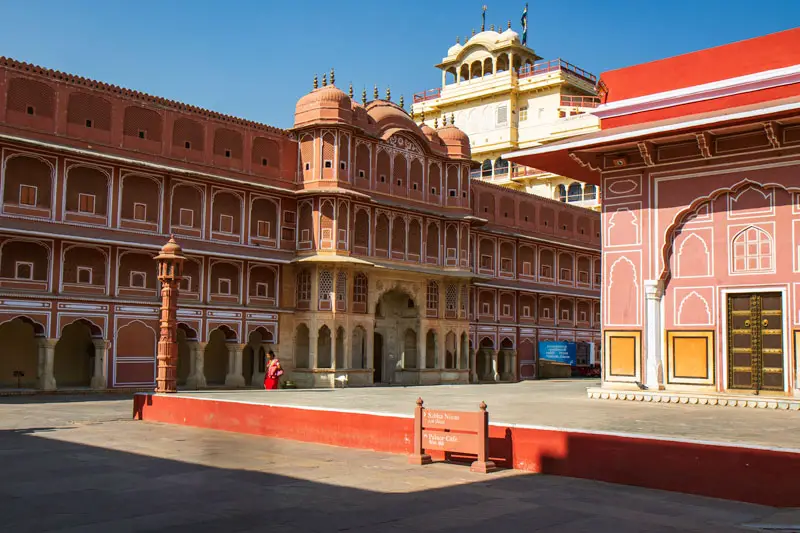
Jaipur is a key part of India’s famous Golden Triangle, which also includes Delhi and Agra. Whether you are a history enthusiast, a culture seeker, or someone who enjoys vibrant cityscapes, Jaipur has something for everyone. This guide will take you through the best places to visit in Jaipur, offering insights and tips to make your journey unforgettable.
Things to Know Before You Visit Jaipur
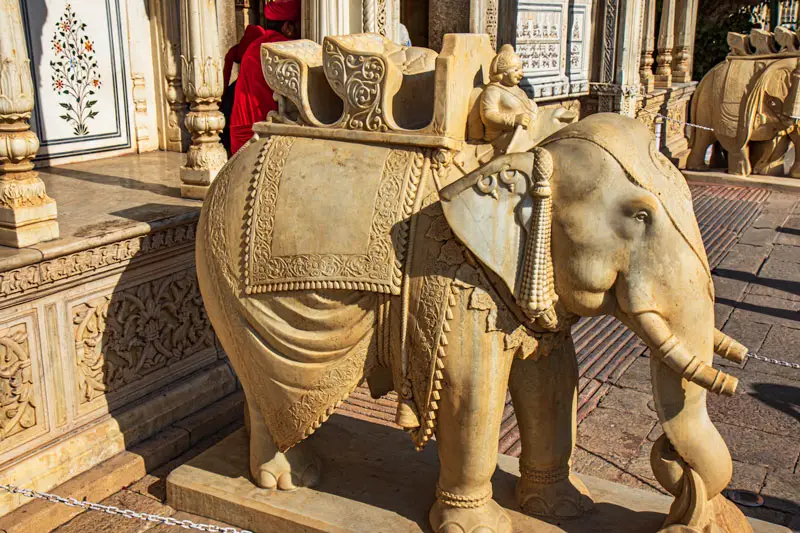
Before diving into the vibrant streets and majestic palaces of Jaipur, it’s essential to understand a few key aspects that will enhance your experience. From its rich historical background to practical travel tips, knowing these details will help you appreciate the city’s depth and navigate it more effectively.
Understanding Jaipur’s Historical Significance
Founded in 1727 by Maharaja Sawai Jai Singh II, Jaipur was the first planned city of India, designed according to Vastu Shastra, the ancient Hindu architectural doctrine. The city is laid out in a grid system, with broad avenues and expansive public spaces, which was revolutionary for its time. Jaipur’s rich history is evident in its palaces, forts, and temples, many of which are still in use or have been preserved as museums.
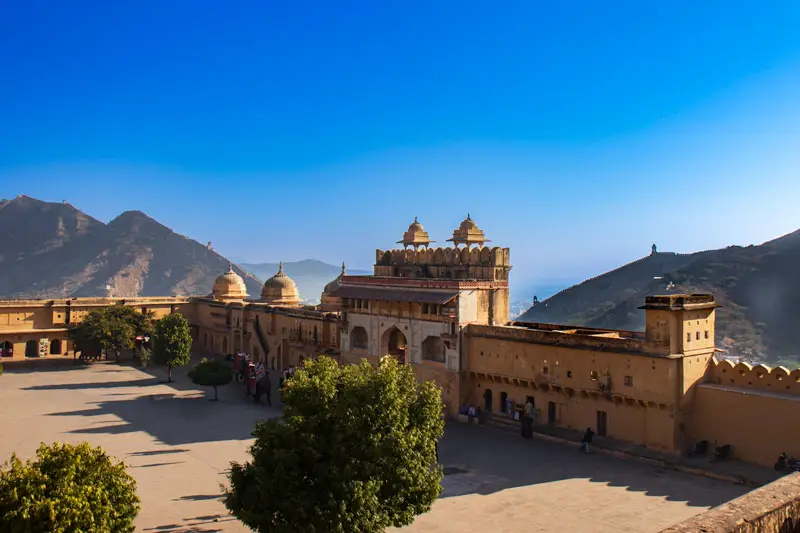
The Best Time to Visit Jaipur
The best time to visit Jaipur is during the cooler months, from October to March, when the weather is pleasant, and outdoor activities can be enjoyed without the intense heat of summer. The city also hosts several festivals during this period, including the famous Jaipur Literature Festival and the vibrant Holi celebrations.
How to Get Around Jaipur
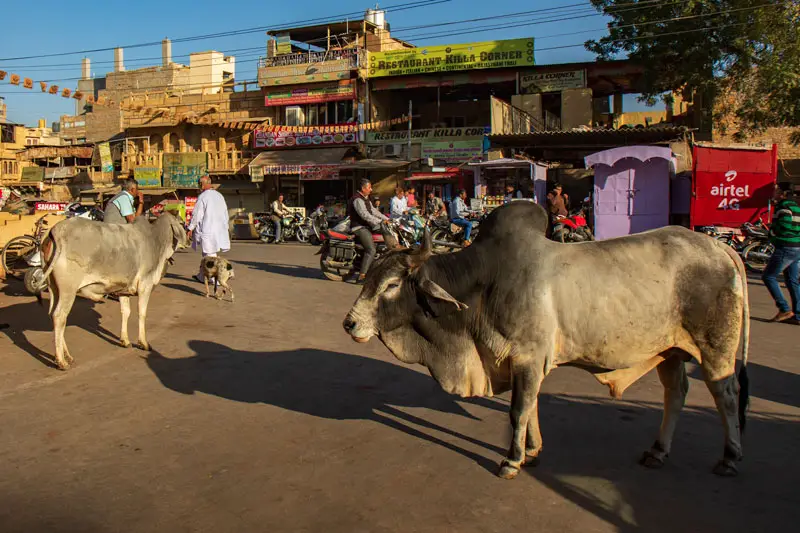
Jaipur is well-connected by road, rail, and air. Once in the city, getting around is relatively easy, with options ranging from auto-rickshaws and taxis to buses and bicycle rentals. For a more immersive experience, consider taking a guided walking tour or renting a bike to explore the city at your own pace.
Top Places to Visit in Jaipur
Jaipur is a city brimming with historical landmarks, vibrant markets, and architectural wonders that reflect its royal past. Whether you’re fascinated by palaces, forts, or bustling bazaars, Jaipur offers a variety of must-see attractions. Let’s explore the top places that should be on every traveler’s itinerary when visiting the Pink City.
1. Hawa Mahal: The Iconic Palace of Winds
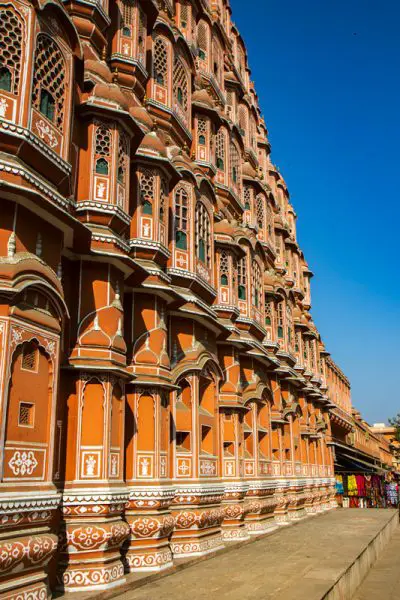
The Hawa Mahal is perhaps the most recognizable landmark in Jaipur. This five-story palace, constructed in 1799 by Maharaja Sawai Pratap Singh, was built to allow the royal ladies to observe daily life on the streets below without being seen. The palace’s unique façade, featuring 953 small windows or ‘jharokhas,’ is designed in the form of Krishna’s crown. The delicate latticework not only provided privacy but also allowed cool air to circulate through the palace, hence the name ‘Palace of Winds.’
Insider Tip: Visit Hawa Mahal early in the morning to see the sunlight filtering through the windows, casting a warm glow on the pink sandstone.
2. City Palace: The Heart of Jaipur
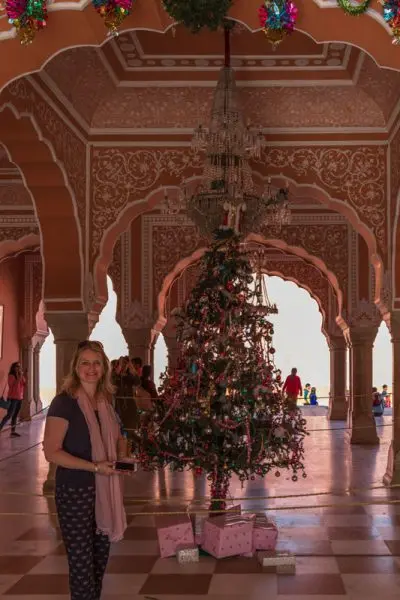
Located in the heart of Jaipur, the City Palace is a stunning blend of Rajasthani and Mughal architecture. Built between 1729 and 1732 by Sawai Jai Singh II, the palace complex includes several courtyards, gardens, and buildings, each with its unique charm.
Mubarak Mahal:
This welcome hall now houses a museum showcasing royal costumes, textiles, and artifacts.
Chandra Mahal:
Still home to the royal family, this seven-story building offers a glimpse into the opulence of the royals. The ground floor is open to the public and features intricately designed gates representing the four seasons.
Sarvato Bhadra:
This hall of private audience houses two enormous sterling silver vessels, listed in the Guinness Book of World Records as the largest in the world.
Visitor Information: The City Palace is open daily from 9:30 AM to 5:30 PM, with tickets priced at INR 500 for adults and INR 300 for students.
3. Jantar Mantar: A UNESCO World Heritage Site
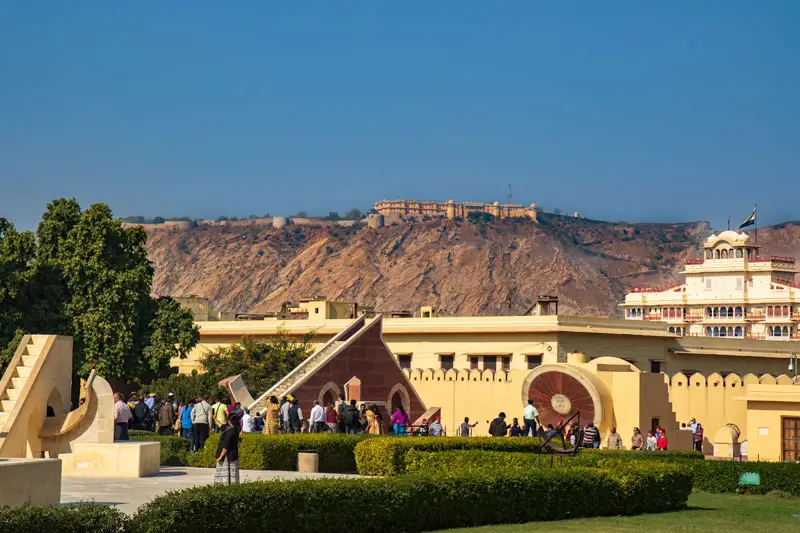
Jantar Mantar is an astronomical observatory that dates back to 1728. Built by Maharaja Sawai Jai Singh II, this site is home to 19 large instruments designed for measuring time, predicting eclipses, and tracking celestial bodies. The most notable of these is the Samrat Yantra, the world’s largest stone sundial, standing at 27 meters tall.
Why Visit: Jantar Mantar a UNESCO World Heritage Site is not just a scientific marvel but also an architectural wonder, illustrating the advanced knowledge of astronomy in 18th-century India. It’s a must-visit for those interested in science and history.
4. The Bazaars of Jaipur: Shopping Extravaganza
Jaipur is a shopper’s paradise, with bustling bazaars that offer everything from jewelry and textiles to handicrafts and spices. Exploring these markets is an essential part of the Jaipur experience.
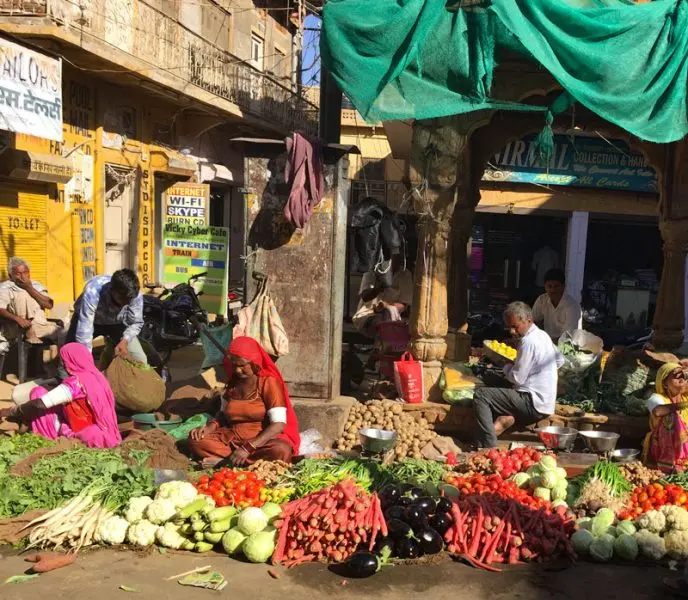
Johari Bazaar:
Known for its exquisite jewelry, this market is the go-to place for those looking to buy gemstones, gold, and silver ornaments.
Tripolia Bazaar:
Famous for its lac jewelry and bangles, this market also offers a wide range of textiles, brassware, and carpets.
Bapu Bazaar:
One of the most popular markets in Jaipur, Bapu Bazaar is known for its leather goods and colorful fabrics. It’s a great place to shop for souvenirs and traditional Rajasthani attire.
Pro Tip: Bargaining is expected in Jaipur’s markets, so don’t hesitate to negotiate for the best price!
Must-Visit Forts and Palaces Near Jaipur
The grandeur of Jaipur extends beyond its city limits, with several remarkable forts and palaces located in the surrounding areas. These historic sites not only offer breathtaking views and architectural beauty but also provide a deeper understanding of Rajasthan’s royal heritage. Here are the must-visit forts and palaces near Jaipur that you shouldn’t miss.
1. Jal Mahal: The Water Palace

Jal Mahal, meaning ‘Water Palace,’ is an architectural marvel situated in the middle of Man Sagar Lake. The palace was built in the 18th century by Maharaja Madho Singh I as a lodge for duck hunting. Its unique construction, with four of its five floors submerged underwater when the lake is full, gives the illusion of a floating palace. Although entry to the palace is restricted, you can enjoy the serene views from the lakeshore.
Best Time to Visit: The evening, when the palace is beautifully lit, and the reflections in the water create a magical ambiance.
2. Amber Fort: A Majestic Fortress

Amber Fort, located 11 km from Jaipur, is one of the most magnificent forts in India. Built by Raja Man Singh in 1592, this UNESCO World Heritage Site is an excellent example of Rajput architecture. The fort is made of red sandstone and marble, and its interiors are adorned with intricate carvings, mirror work, and precious stones.
Sheesh Mahal:
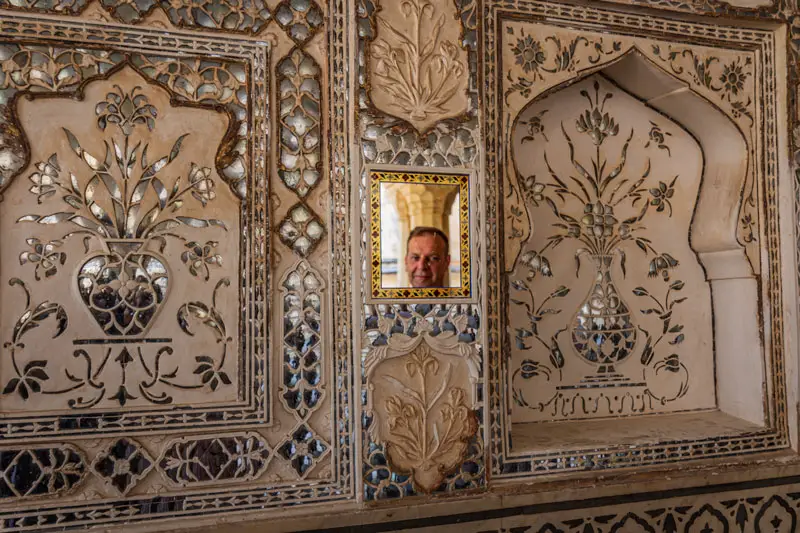
The Hall of Mirrors is a highlight of the fort, where tiny mirrors are inlaid in the walls and ceilings, creating a mesmerizing effect when a single candle is lit.
Diwan-i-Aam:

The Hall of Public Audience, where the king met his subjects, is another must-see.
How to Get There: You can reach Amber Fort by car, bus, or even an elephant ride up the hill. However, note that there are concerns about the ethical treatment of elephants, so walking or taking a jeep might be better.
3. Jaigarh Fort: The Fort of Victory
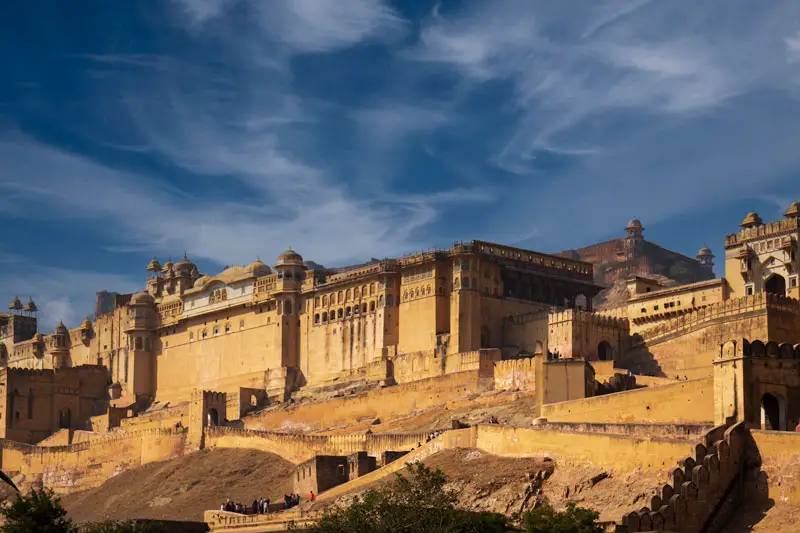
Overlooking Amber Fort and Maota Lake, Jaigarh Fort is known for its massive cannon, Jaivana, which was once the world’s largest cannon on wheels. Built in 1726 by Maharaja Jai Singh II, the fort served as a military outpost, housing Jaipur’s armory and treasury.
Things to See: Explore the underground passages connecting Jaigarh and Amber forts, and don’t miss the stunning views of the Aravalli hills from the fort’s ramparts.
4. Nahargarh Fort: A Scenic Retreat
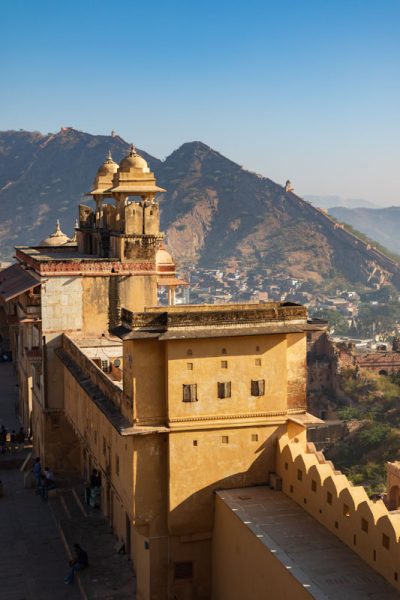
Perched on the edge of the Aravalli hills, Nahargarh Fort offers panoramic views of Jaipur city. Built in 1734 by Maharaja Sawai Jai Singh II, the fort was originally a retreat for the royal family. It was later expanded in 1868 and now includes the Madhavendra Bhawan, a palace with several suites for the king and his queens.
Why Visit: Nahargarh Fort is less crowded than Amber and Jaigarh, making it a perfect spot for a quiet retreat or a picnic. The fort is also popular for its sunset views, which are simply breathtaking.
Exploring Beyond Jaipur: Day Trips and Excursions
While Jaipur itself is rich in history and culture, the surrounding areas offer equally captivating experiences. A short journey from the city takes you to towns and villages where traditional crafts, historical marvels, and natural beauty await. These day trips and excursions provide a deeper insight into Rajasthan’s diverse heritage and are perfect for those looking to explore beyond the city’s borders.
1. Sanganer and Bagru: The Textile Towns
For those interested in traditional crafts, a visit to the nearby towns of Sanganer and Bagru is a must. These towns are famous for their hand-block printed textiles, a craft that has been practiced for centuries. You can visit workshops to see artisans at work and even try your hand at block printing.
What to Buy: Sanganer is known for its fine block-printed fabrics, while Bagru specializes in indigo-dyed prints. Both make for unique and authentic souvenirs.
2. Abhaneri: The Stepwell Village
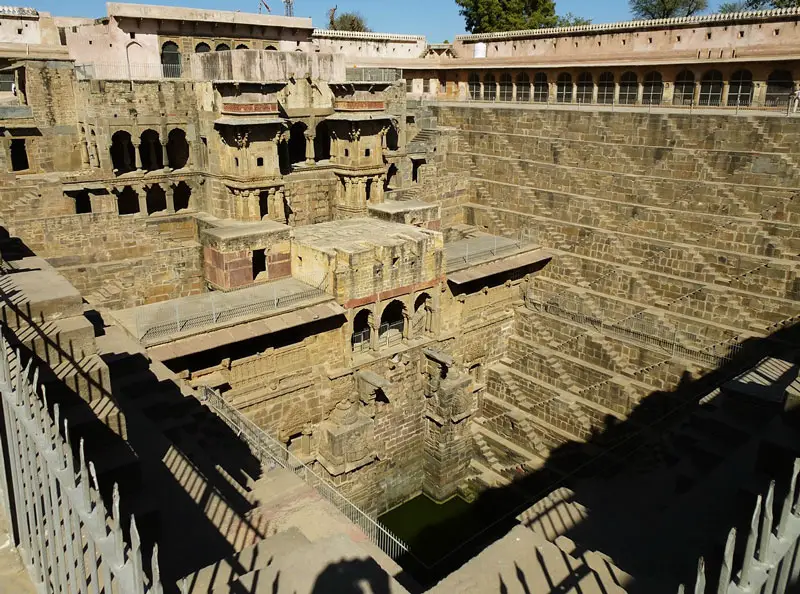
Located about 95 km from Jaipur, Abhaneri is home to the Chand Baori, one of the largest and most intricate stepwells in India. Built in the 9th century, this stepwell features 3,500 narrow steps arranged in perfect symmetry, descending 13 stories into the ground.
Why Visit: Abhaneri offers a glimpse into the ancient engineering marvels of India, and its stepwell is a photographer’s dream.
Where to Stay in Jaipur
Jaipur offers a range of accommodation options to suit all budgets, from luxury hotels to budget hostels. For a more immersive experience, consider staying in a heritage hotel, where you can experience the grandeur of Rajasthan’s royal past.
Luxury:
Rambagh Palace, a former royal residence, offers a luxurious stay with impeccable service.
Mid-Range:
Alsisar Haveli, a heritage hotel, provides a blend of traditional charm and modern amenities.
Budget:
Zostel Jaipur, a popular hostel among backpackers, offers affordable dorms and private rooms in a lively atmosphere.
Conclusion: Jaipur Awaits Your Exploration
Jaipur is more than just a city; it’s a living museum of India’s royal past. From its grand palaces and forts to its vibrant markets and cultural heritage. Jaipur offers a rich tapestry of experiences for every traveler. Whether you’re backpacking through India or planning a luxury vacation. The Pink City promises to leave you with memories that will last a lifetime. Be sure to visit the top places mentioned in this guide to make the most of your trip to Jaipur.

